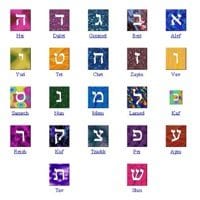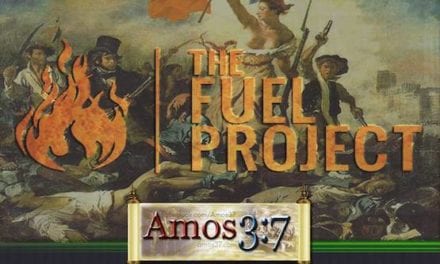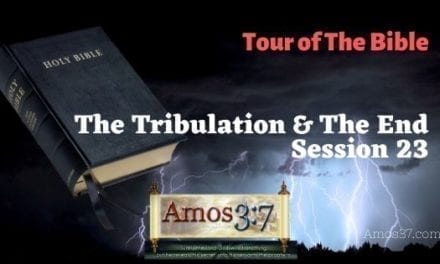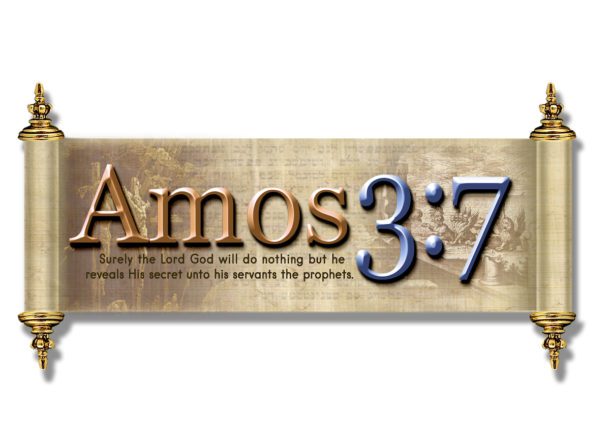 The PASHAT is the key stone of Scripture understanding. If we dis card the PASHAT we lose any real chance of an accurate under standing. We are left with a no-holds-barred game of pure imagination in which we are no longer objectively deriving mean ing from the Scriptures (exogesis), but subjectively read ing mean ing into the scriptures (eisogesis) (see 2Peter 1:20–21; 1Tim. 4:3–4). Thus the Talmud twice warns us: “No passage loses its PASHAT” (From below) NOTE: Amos37 does not support any document outside of the scripture except for gaining a historical understanding. Strictly as a historical commentary. Many today read it as if it is inspired.
The PASHAT is the key stone of Scripture understanding. If we dis card the PASHAT we lose any real chance of an accurate under standing. We are left with a no-holds-barred game of pure imagination in which we are no longer objectively deriving mean ing from the Scriptures (exogesis), but subjectively read ing mean ing into the scriptures (eisogesis) (see 2Peter 1:20–21; 1Tim. 4:3–4). Thus the Talmud twice warns us: “No passage loses its PASHAT” (From below) NOTE: Amos37 does not support any document outside of the scripture except for gaining a historical understanding. Strictly as a historical commentary. Many today read it as if it is inspired.
4 Levels of Scripture Understanding
The Hebrew/Aramaic word PARDES is spelled in Hebrew and Aramaic with out vowels as PRDS. PaRDeS refers to a park or garden, esp. the Garden of Eden. The word appears three times in the Aramaic New Testament (Lk. 23:43; 2Cor. 12:4& Rev. 2:7).
The word PRDS is also an acronym (called in Judaism “notarikon”) for:
Pashat (Heb. “sim ple”)
Remez (Heb. “hint”)
Drash (Heb. “search”)
Sod (Heb. “hidden”)
These are the four levels of under stand ing the scriptures. Each layer is deeper and more intense than the last, like the layers of an onion.
PASHAT
The first level of under stand ing is PASHAT (simple). The Pashat is the literal meaning. It is similar to what Protestant hermeneutics calls “Grammatical Historical Exogesis” and also similar to what Protestant Hermeneutics calls “The Literal Principle.”
The PASHAT is the plain, simple meaning of the text; understanding scripture in its natural, normal sense using the customary mean ings of the words being used, in accordance with the primary exegetical rule in the Talmud that no passage loses its PASHAT (b.Shab. 63a; b.Yeb. 24a). While there is figurative language (like Ps. 36:7) symbolism (like Rom. 5:14); allegory (like Gal. 4:19–31) and hidden meanings (like Rev. 13:18; see also 1Cor. 2:7) in the Scriptures, the first thing to look for is the literal meaning or PASHAT.
The follow ing rules of thumb can be used to determine if a pas sage is fig u ra tive and there fore figurative even in its PASHAT:
When an inanimate object is used to describe a living being, the statement is figurative. (Exam ple: Prov. 18:10)
When life and action are attrib uted to an inanimate object the statement is figuartive. (Example: same example Prov. 18:10)
When an expression is out of character with the thing described, the statement is figurative. (Example: Ps. 17:8)
The PASHAT is the key stone of Scripture understanding. If we dis card the PASHAT we lose any real chance of an accurate under standing. We are left with a no-holds-barred game of pure imagination in which we are no longer objectively deriving meaning from the Scriptures (exogesis), but subjectively read ing meaning into the scriptures (eisogesis) (see 2Pt. 1:20–21; 1Tim. 4:3–4). Thus the Talmud twice warns us: “No passage loses its PASHAT” (b.Shab. 63a; b.Yeb. 24a).
REMEZ
The next level of under stand ing is called in Hebrew REMEZ (hint). This is the implied mean ing of the text. Peculiarities in the text are regarded as hinting at a deeper truth than that con veyed by its PASHAT.
An exam ple of implied “REMEZ” mean ing may be found in Ex. 21:26–26-27 where we are told of our liability regard ing eyes and teeth. By the “REMEZ” under stand ing we know that this lia bil ity also applies to other body parts.
DRASH
Another level of under stand ing the Scrip tures is called in Hebrew “drash” meaning “search”, this is the allegorical, typological or homiletical application of the text. Creativity is used to search the text in rela tion to the rest of the Scrip tures, other lit er a ture, or life itself in order to develop an allegorical, typological or homiletical application of the text. This process involves eisogesis (read ing of the text) of the text.
Three important rules of thumb in utilizing the drash level of under stand ing a scrip ture are:
[1] A drash under stand ing can not be used to strip a pas sage of its PASHAT meaning, nor may any such understanding contradict any PASHAT mean ing of any other scripture passage. As the Talmud states “No passage loses itsPASHAT.” (b. Shab. 63a; b.Yeb. 24a)
[2] Let scripture interpret scripture. Look for the scriptures them selves to define the components of an allegory. For example use Mt. 12:18–23 to under stand Mt. 13:3–9; Rev. 1:20 to under stand Rev. 1:12–16; Rev. 17:7–18 to understand Rev. 17:2–8 ect…
[3] The pri mary com po nents of an allegory represent specific realities. We should limit ourselves to these primary components when understand ing the text.
EXAMPLES OF DRASH UNDERSTANDINGS:
Mt. 2:15 on Hosea 11:1
Mt. 3:11 on Is. 40:3
Rom. 5:14 (14–21) on Gen. 3:1–24
I Cor. 4:6
Gal. 4:24(21–31) on Gen. 17–22
Col 2:17
Heb. 8:5 on priesthood
Heb. 9:9, 24 on the Tabernacle
Heb. 10:1 on the Torah
Heb. 11:19 on Gen. 22:1f
1Pt. 3:21 on Gen. 6–9
SOD
The final level of under stand ing the Scriptures is called in Hebrew “SOD” meaning “hidden”. This understanding is the hidden, secret or mystic meaning of a text. (See I Cor. 2:7–16 esp. 2:7). This process often involves returning the letters of a word to their prime-material state and giving them new form in order to reveal a hidden meaning. An example may be found in Rev. 13:18 where the iden tity of the Beast is expressed by its numeric value 666.
_______________
Dr. James Trimm
Connect with Amos37
Stay up to date with Amos37.com eMail update (Weekly)
Free Resources for the growing Christian.
“But grow in grace, and [in] the knowledge of our Lord and Saviour Jesus Christ. To Him [be] glory both now and for ever. Amen.” 2 Peter 3:18
Blue Letter Bible Free Online Bible & Study Tools & Commentaries
Bible Classes College Level For Free to Enroll Track your progress.
Our Own Free Discipleship Course In Video HD.


















